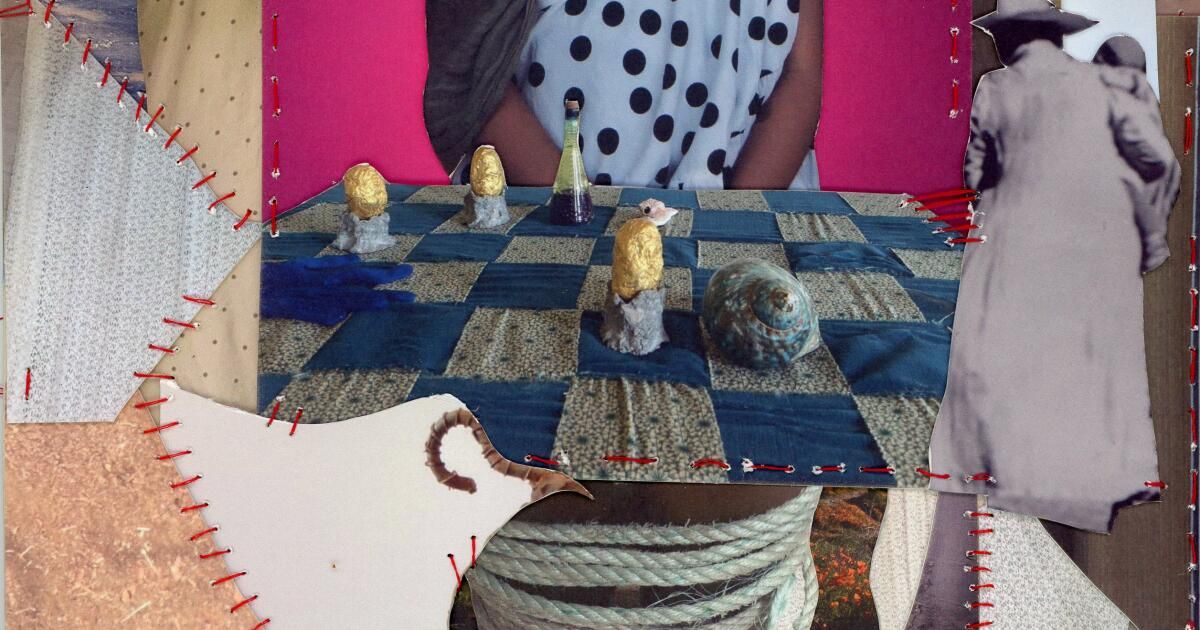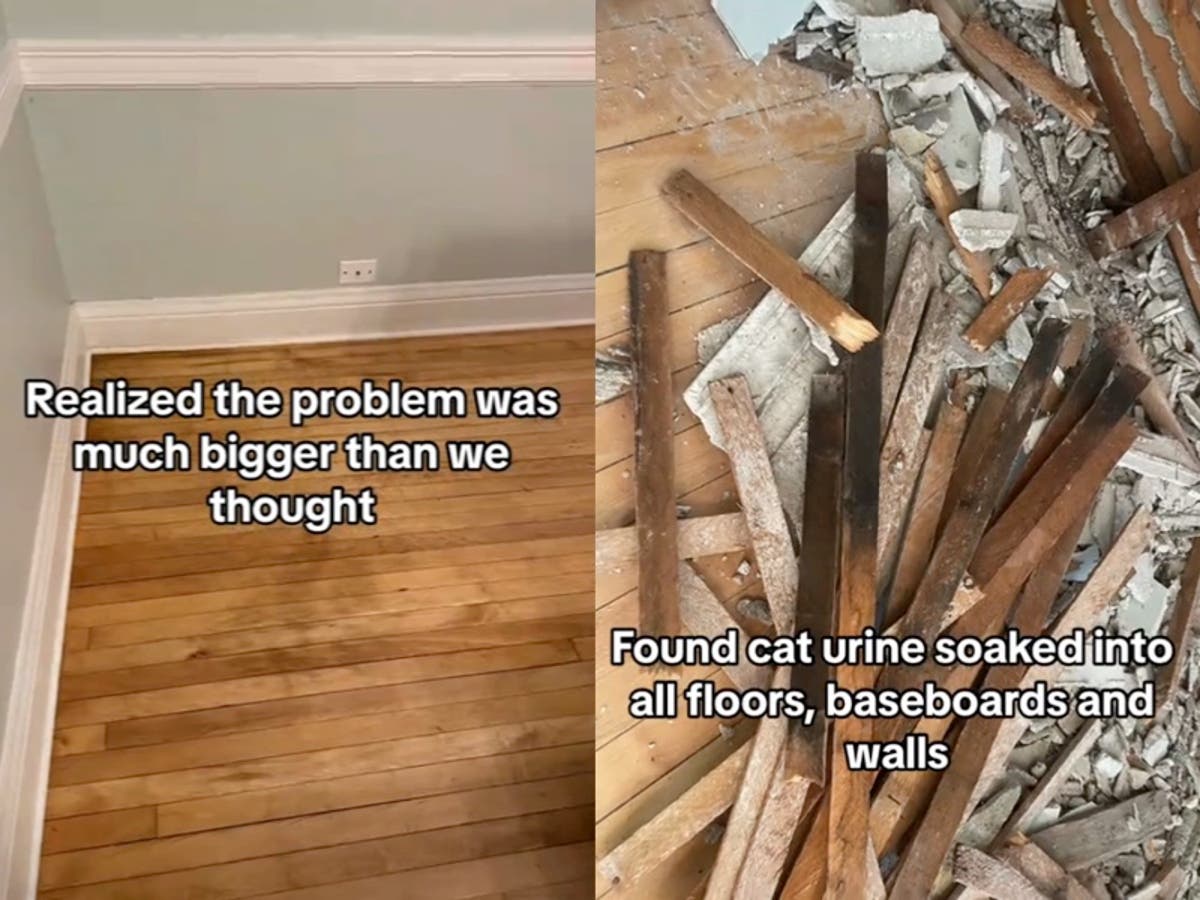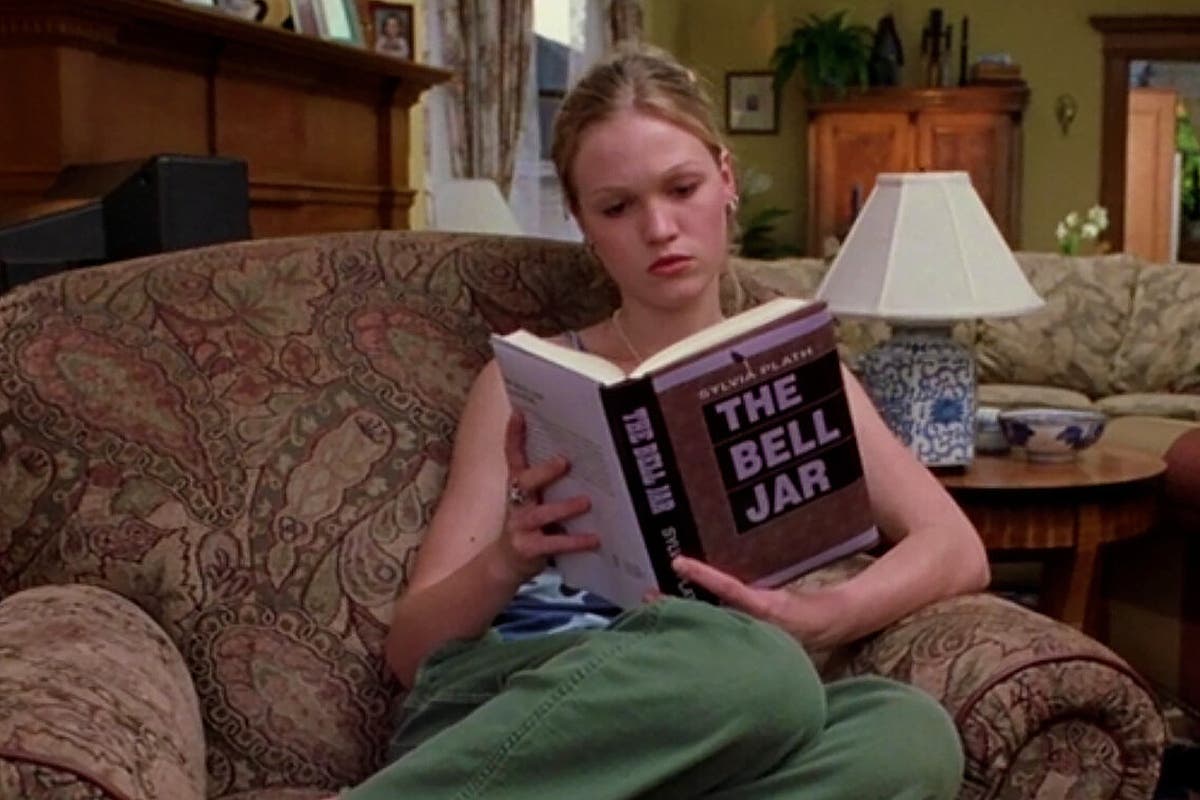“Visitation”, 2024, photo-collage and thread
(lady / For The Times)
This story is part of the April issue of Image, “Dream”- an invitation to lean into the spaces of dreams and fantasy. Enjoy the trip.
The first Visit occurs in a dream on the wings of a plane that transports me and my mother to San Antonio, because my sister has died. My sister materializes through clusters of golden tones, she motions with her hand for me to come closer to her, and so I do. Into my palms, she drops an orb of pure golden light before retreating back into the clouds.
Visits, in addition to meaning a gathering of friends and family for the recently deceased, can also be defined as a visit. of the dead people. In my Dream Life, my sister returns, randomly but always intensely, to travel here to me within my perceptible life, to tell me things. It's not always so clear what she has traveled so far to tell me.
Instead of holding a wake, my family chooses to offer two funeral services. You can't close an entire grocery store, so we opted to maintain service for two nights, to allow my late sister's coworkers to come in between shifts.
Everyone (clients, old school friends, neighbors, children of exes) clings to me to tell me that my sister had been their angel, their inspiration and the light that guided them in life. My sister, who died at the age of 48 from breast cancer, had become an angel thanks to the action of Death, but (as was reaffirmed again and again through the tears and pains of the receiving line) He had also been an angel in his Waking Life.
The visits occur because those who cry occupy an unreal space; the loss transcends reality or collapses that once stable sense of self, space, and time.
The visits occur because those who cry occupy an unreal space; the loss transcends reality or collapses that once stable sense of self, space, and time. Like any of us who have lost You know, such deep losses fracture the self. Loss disrupts our notions of space: space is now dominated by an insurmountable absence. This absence distorts time or those boundaries of days, weeks or months that were once so clearly demarcated.
In grief and pain, it is this same haze of fracture of self, space and time that can find, in the practice of Visitation, some temporal references within a disrupted world. Seeing familiar faces, hearing the old story, thinking of the old song: such memories bind us, however frayed and fragile the web of pain, to a transformed world. The world is now distorted: it is a world in which someone has disappeared.
In the world now absent my sister, I cling to each and every one of her Visitations when she comes in dreams. I have always had a peculiar interest in dream life, and after my sister's death, I discovered that if I wanted to continue any form of communication with her, I would have to be the astronomer and collector of detailed data at the dream observatory. Only I could maintain vigilance; Only I could transcribe the destinations.
Then I began to entangle my Waking Life within the Dream Life.
Suddenly, it seems like everyone wants to have a lucid dream. I say: dream first, but dream actively. Here are some practices I take to ensure a commitment to the life of my dreams:
- Keep a notebook next to your bed. Grab this notebook first thing when you wake up, whatever the time. Even if you don't remember any dreams, this practice, which can be difficult to establish, will become a habit. If you cannot remember the dream fully formed, record dreamlets – the fragments of dreams.
- Drinking water. The body, of course, is at its best when it's hydrated, but falling asleep with a full bladder will help you wake up in the middle of the night with a glimmer of sleep. Make sure you discipline yourself to write down your dreams before you go to the bathroom and forget them. Keep a notebook next to the bathroom to help you remember.
- Rest your mind before sleeping. Tell yourself that you are going to dream and that you will remember your dreams and that you will write them down. It's okay if you are stressed or have troubling thoughts before bed. Think what you want, but always firmly believe that you will dream. I recommend reading before going to sleep, since it is an activity that stimulates the mind, imagination, openness to surprise, close attention and interpretation: These are the ingredients of reading. your own dreams.
- Sleep. We have more opportunities to dream when we can sleep in. Treat yourself to this at least once a week.
- Try mugwort in your bedtime tea. After a few weeks of active dreaming, try mugwort tea on nights when you can sleep and dream more freely. Mugwort is an herb that is easily harvested and induces more vivid dreams. One teaspoon will be enough.
- Ask yourself what worries you. Can you reframe this concern through what your dreams have shown you?
By paying attention to your dreams and collecting your dreams, you will begin to see a way out. You can face the situation, even if it is in a veiled or coded way, in your dreams. You can practice your exit, your entry or your exit.
In a dream, I was once an unexpected visitor. I arrived at a hallway, white and full of light, through which my sister was sliding. I ran after her, but was stopped by an assistant, dressed in white, who told me that I couldn't go through the doors but that my sister was there, on the other side, making me beautiful.
So who's to say that in this life we're not just visiting? If the dreams of unborn babies are dreams of practicing life, what is this Awakened Life preparing us for?
In a dream, my sister wants to go to Brazil. We are on a highway in San Antonio. We go quickly around all the clovers and overpasses. We took curves dangerously fast. I tell him I'm happy to go with her, but does he know her way? Yes, she answers. She says she goes all the time. She knows the way. In the dream, we never get there, but we are so happy to be free, to just do it, to go wherever, whenever, with a sister.
When dreaming, it is not as easy as paying attention to just one dream. A dream taken from your dream map is simply a piece, a clue, a hint towards a whole. A dream is a spot of paint seen up close on an otherwise enormous masterpiece; You won't know what you're looking at until you've accumulated enough, connected the dots, and done some good detective work.
I'm a writer who thrives on fragments and rarely compose an entire essay in one sitting. I prefer, instead, to accumulate the pieces, sew them together, let chance and discovery order the pieces, determine the binding. I like to start in chaos and have that chaos drive its own refracted focus or brilliance.
My Dreaming Life is no different: I see dreams as fragments of a larger masterpiece. So I write down my dreams.
My Dreaming Life is no different: I see dreams as fragments of a larger masterpiece. So I write down my dreams. These dreams, these glimpses of something seemingly real and lived experience, they eventually draw me into their narratives, eventually show me my struggles and push me towards a way out so that I can solve the problem in the Dream World and at the same time address a real world problem. The two are not inseparable.
I collect the sparkles and connect the dots. The detective side of me sees dreams not as a mere escape from logic, difficulties, or the realities of the day, but rather as a world in the making. Dreams allow me to prepare for the next life as it takes me, night after night, from one realm to the next and back again.
My sister and I walked into a terrifying exhibit at a wax museum on one of the last outings we took together. I was afraid of what might appear. I took her hand and led the way. He knew it would be one of the last times he would hold her hand. My sister, who had always been the first in my fear of dark hallways, was now being led by my hand.
Except, in Waking Life, that is, actually, my sister is the one who first enters the fear of the dark, the dream of Death, which I have always been very afraid of.
If I am to see what there is to see in the current series of Visitation dreams for my deceased sister, then I would have to conclude that she really is there, on the other side, making it beautiful for me.
Jenny Boully is a Guggenheim Fellow whose books, including “Betwixt-and-Between,” employ dreams alongside real-life entanglements. She has two books forthcoming from Graywolf Press. In addition to teaching at Bennington College, she offers private coaching in dream writing.












